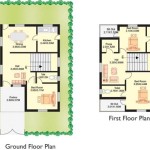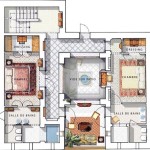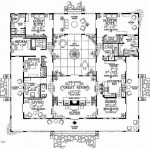How to Build a Bat Box: Free Plans and Instructions
Bats are essential to a healthy ecosystem. They consume vast amounts of insects, including many agricultural pests, providing natural pest control. They also play a vital role in pollinating plants and dispersing seeds. However, bat populations are declining due to habitat loss, disease, and human activity. Building a bat box can provide a safe and secure place for bats to roost, helping to support their populations and the services they provide.
Building a bat box is a relatively straightforward project that can be completed with basic carpentry skills and readily available materials. Many free plans are available online, offering detailed instructions and specifications for different bat box styles and sizes. This article will guide you through the process of building a bat box, outlining essential considerations, materials, tools, and step-by-step instructions.
Choosing the Right Bat Box Plan
The first step is selecting the appropriate bat box plan for your needs. Several factors need to be considered when choosing a plan:
- Target species: Different bat species have distinct preferences for roosting sites. For example, some species prefer larger boxes with multiple compartments, while others favor smaller, single-chamber boxes. Research the bat species common to your area and choose a plan that best suits their needs.
- Location: Consider the placement of the bat box and the surrounding environment. Choose a plan that incorporates design elements suitable for the chosen location. For instance, a box for a wooded area may have a more natural appearance, while a box for an urban setting might be more aesthetically pleasing.
- Materials: Choose a plan that uses readily available and affordable materials. Many plans utilize wood, which is durable and easy to work with. Some plans may use other materials, such as metal or recycled products, but these may require specialized tools or techniques.
Essential Materials and Tools
Once you have chosen a plan, gather the necessary materials and tools. The specific requirements will vary depending on the plan, but generally, you will need:
- Wood: Typically, 1x6 or 1x8 inch untreated pine or cedar boards are used. These woods are resistant to rot and insects, making them ideal for bat boxes. Avoid pressure-treated wood as the chemicals can be harmful to bats.
- Screws: Use stainless steel screws for added durability. Choose a size suitable for the thickness of the boards and the type of wood.
- Saw: A handsaw or circular saw will be needed for cutting the wood to size.
- Drill: A cordless drill with a Phillips head bit is essential for driving screws.
- Level: Ensure that the box is installed level to prevent water from pooling inside.
- Tape measure: Measure and mark the wood accurately before cutting.
- Pencil: Use a pencil to mark cutting lines on the wood.
- Safety glasses: Protect your eyes while using power tools.
Building the Bat Box
Now you can build the bat box following the steps outlined in your chosen plan. This involves:
- Cutting the wood: Use the saw to cut the wood pieces to the specified dimensions, ensuring precision.
- Assembling the box: Carefully assemble the box using screws. Ensure that the seams are tight and secure.
- Adding the landing strip: Attach a landing strip to the front of the box, allowing bats to easily enter and exit. The strip should be positioned approximately 1-2 inches below the entrance hole.
- Creating ventilation holes: Drill several small ventilation holes in the back or sides of the box. These holes allow for airflow, preventing the accumulation of moisture within the box.
- Painting or staining (optional): If desired, paint or stain the exterior of the box to provide protection from the elements and enhance its appearance. Use non-toxic paints or stains that are safe for bats.
Installing the Bat Box
Once the bat box is built, it needs to be installed in a suitable location. The ideal placement will vary depending on the bat species and the environment, but some general guidelines to follow are:
- Facing south or east: Position the box to receive at least several hours of direct sunlight each day. This will help to keep the box warm and dry.
- Height: Mount the box between 15 and 20 feet high. The specific height may vary depending on the location and the type of tree or structure used for mounting.
- Near a water source: Bats need access to water for drinking and cooling. Choose a location near a pond, stream, or other water source.
- Protected from wind and rain: Install the box in a location sheltered from strong winds and heavy rain. This will help to prevent water damage and keep the box dry.
- Secure mounting: Use strong screws or brackets to securely mount the box to the chosen tree or structure. Ensure it is stable and won't fall.
By following these tips, you can create a comfortable and safe haven for bats in your backyard. Remember to monitor the bat box regularly, making repairs or cleaning as needed. You can also observe the bats that use the box, learning about their behavior and contributing to bat conservation efforts.

How To Build A Bat Box The Wildlife Trusts

Free Blueprints For Bat Houses Colab

Free Blueprints For Bat Houses Colab

May 2008 The Lazy Homesteader

Bat Houses Mass Gov

Diy Bat House Plans Free

37 Free Diy Bat House Plans That Will Attract The Natural Pest Control And Save Their Lives

How To Build A Bat Box Sheffield Rotherham Wildlife Trust

Plan Jpg

Build A Bat House Popular Woodworking








